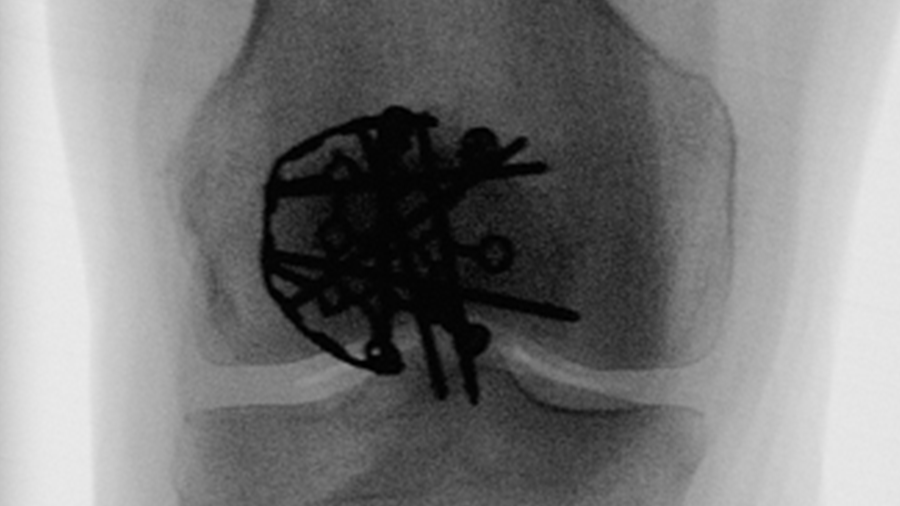
Novel dynamic screw-suture stabilization system for syndesmotic repair provides better anteroposterior translation and axial tibiofibular joint stability – a biomechanical investigation
Fig 1 The novel screw-suture repair system for precise anatomical syndesmotic fixation.
The aim of this project was to investigate its performance compared with a suture-button stabilization of unstable syndesmotic injuries.
Materials and Methods
Eight pairs of human anatomical specimens, namely lower legs, were scanned by computed tomography (CT) under 700 N single-leg axial loading in five foot positions – neutral, 15° external/internal rotation and 20° dorsiflexion/plantarflexion in three different states: (1) pre-injury (intact); (2) injured, characterized by complete syndesmosis and deltoid ligaments cuts simulating pronation-eversion injury types III and IV as well as supination-eversion injury type IV according to Lauge-Hansen; (3) reconstructed, using a screw-suture (FIBULINK, Group 1) or a suture-button (TightRope, Group 2) implant for syndesmotic stabilization, placed 20 mm proximal to the tibia plafond/joint surface (Fig 2).
Next, all specimens were biomechanically tested over 5000 cycles under combined 1400 N axial and ±15° torsional loading. Clear space (diastasis), anterior tibiofibular distance, talar dome angle, and fibular shortening were measured radiologically from the CT scans. Anteroposterior, axial, mediolateral, and torsional movements at the distal tibiofibular joint level were evaluated biomechanically via motion tracking.
Results
In each group clear space increased significantly after injury (P ≤ .004) and became significantly smaller in reconstructed compared with both pre-injured and injured states (P ≤ .041). In addition, after reconstruction it was significantly smaller in Group 1 compared with Group 2 (P < .001). Anteroposterior and axial movements were significantly smaller in Group 1 compared with Group 2 (P < .001; Fig 3). No further significant differences were identified nor detected between the two groups (P ≥ .113).
Conclusion
Although both implant systems demonstrate ability for stabilization of unstable syndesmotic injuries, the screw-suture reconstruction provides better anteroposterior translation and axial stability of the tibiofibular joint and maintains it over time under dynamic loading. Therefore, it can be considered as a valid option for treatment of syndesmotic disruptions.







